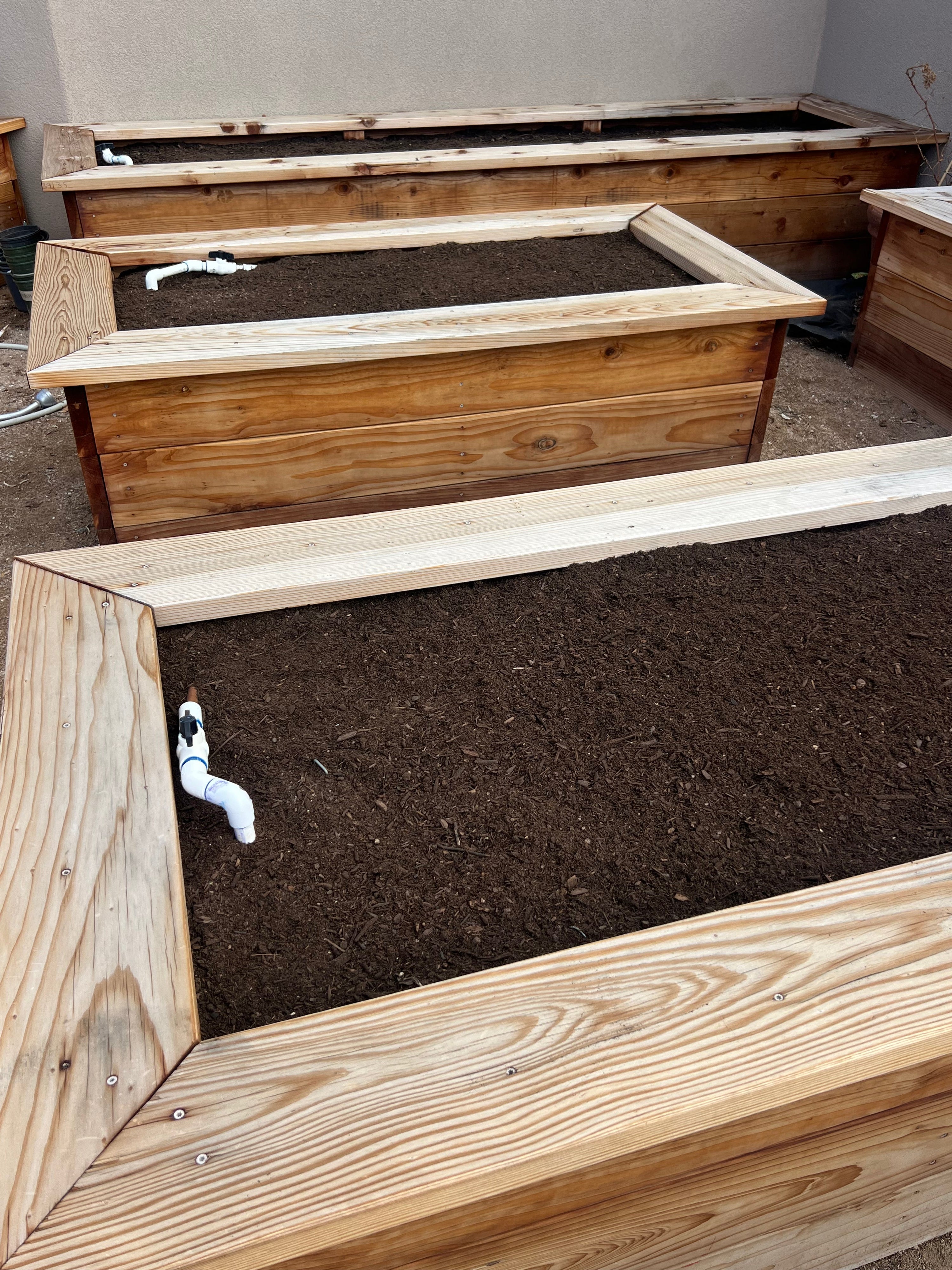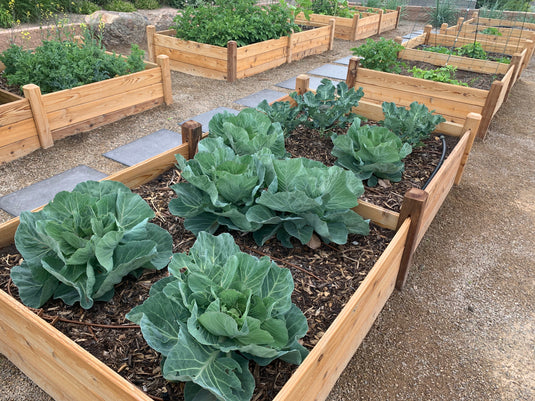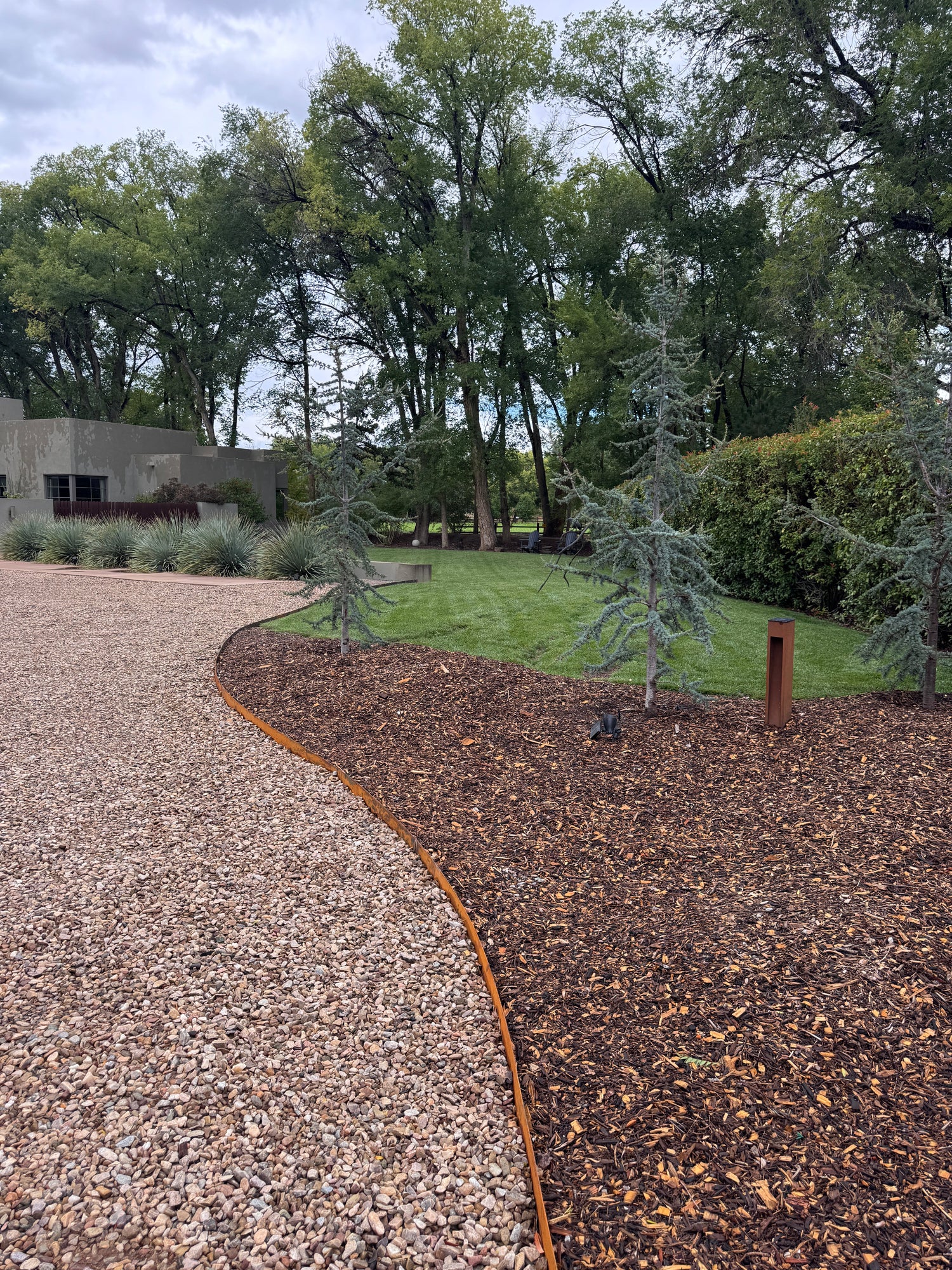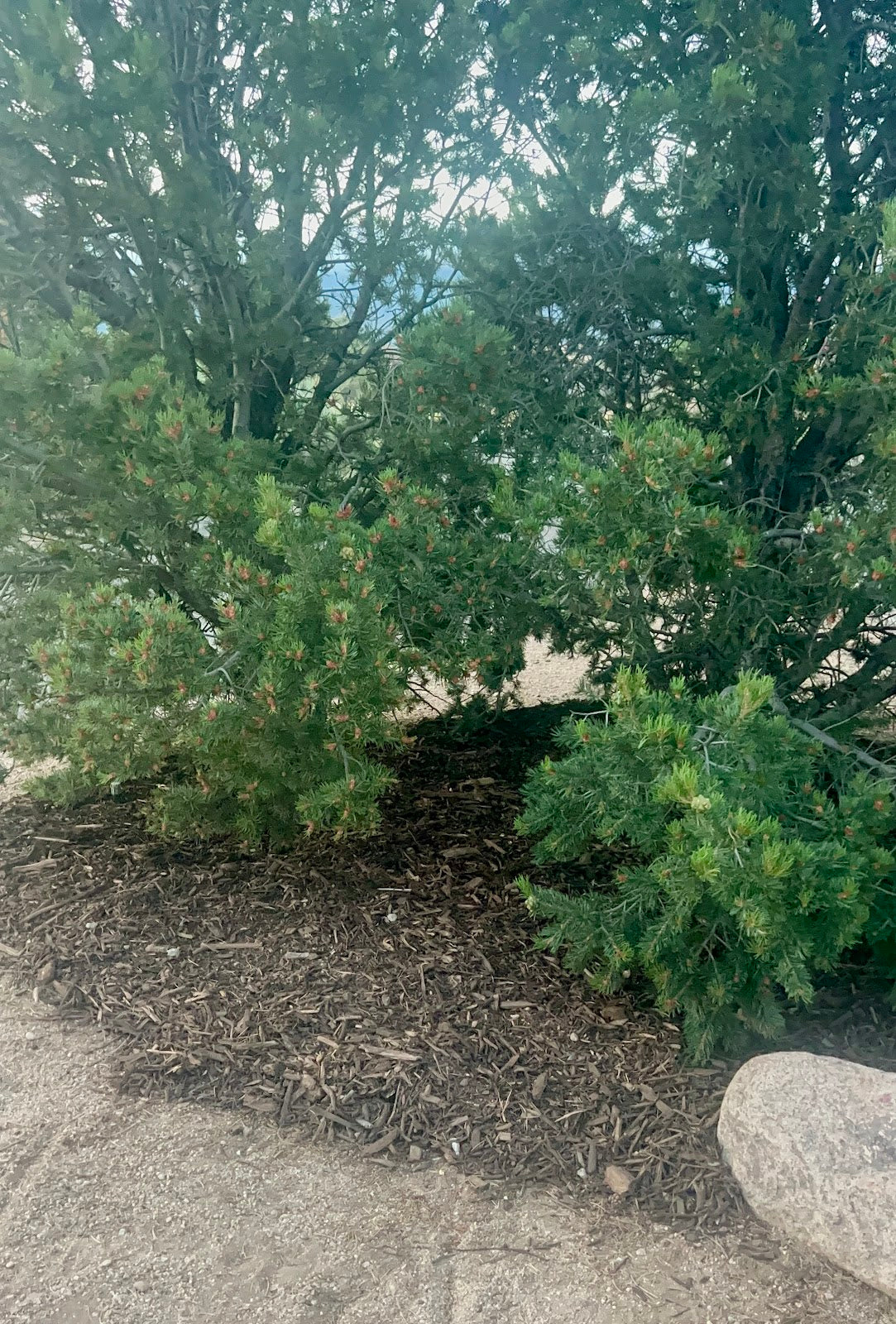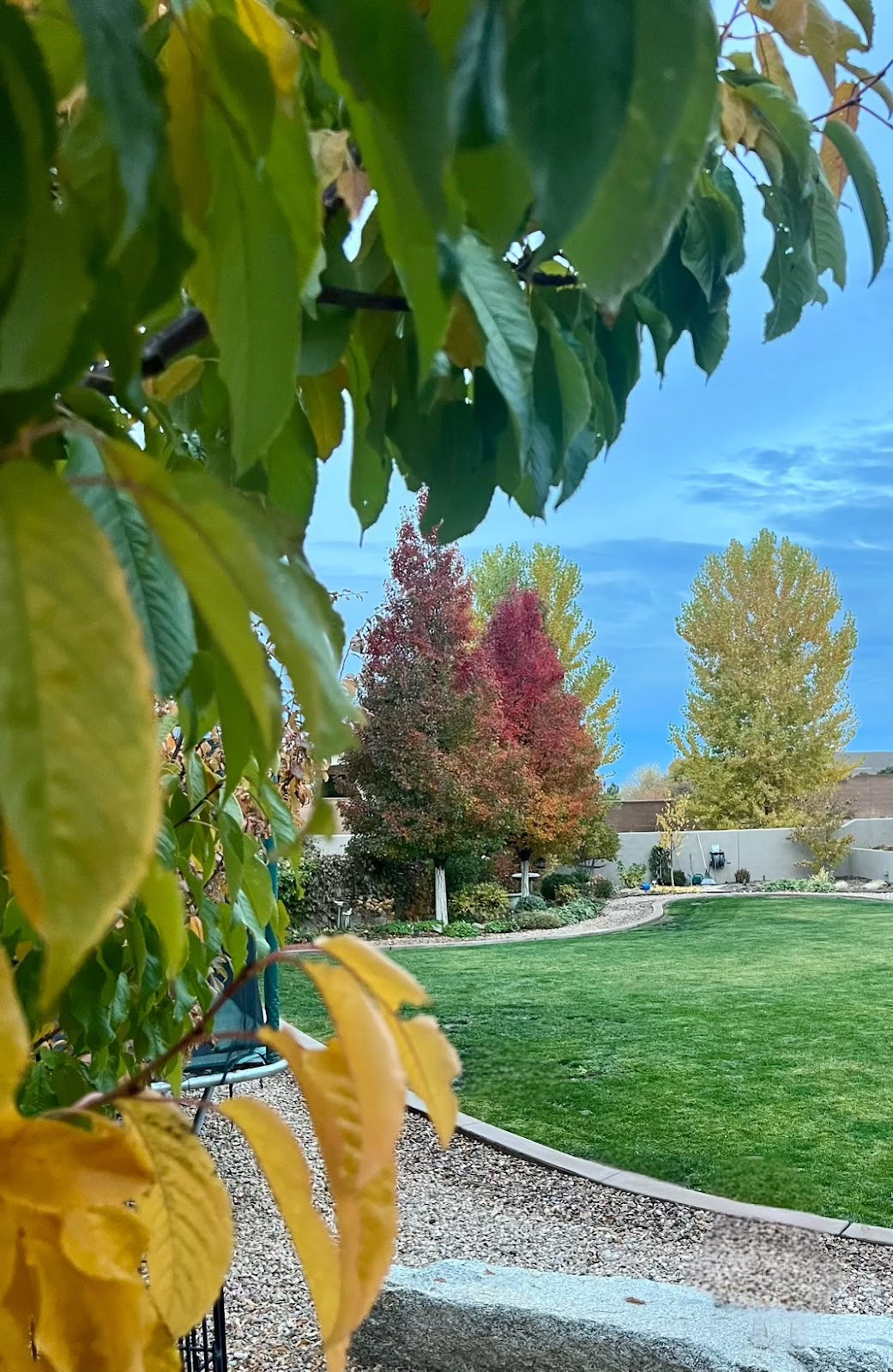By Wendy Blair, Expert Gardener, Instagram: @505garden
There is never a shortage of garden chores in the Fall, but checking some items off your list now will help lighten the load come next year. Plus, a lot of the tasks can be done in Autumn while the weather is mild. Following this Fall Garden Checklist will reward you with a healthy and beautiful garden come next spring!
For your lawn: Winterizing your grass
A perfect green lawn won't pop up in the summer like magic without preparation. Winterizing your lawn in the fall is necessary as part of the process to keep your grass thick and healthy. Click here to read more details on how to winterize your lawn that is safe for your family and your pets! Learn more about winterizing your lawn in this article.
In the vegetable garden:
For most of us who have planted vegetable gardens, we are coming to terms with the fact that our harvest is slowing down. As we get closer to our first frost, there are a few things you can do to make the most out of your vegetable beds.

Harvest all tender crops before the first frost.
As winter approaches, look at the weather reports for news of first frost warnings. Make sure to harvest the most tender crops like basil, tomatoes and peppers first. Basil can be kept in water and in the refrigerator for a few days until it can be dried, frozen or made into pesto. Unripe tomatoes and peppers can be put in paper bags in a warm spot in the kitchen to finish ripening.
Prepare vegetable beds for next year’s crops
There are a few things you can do now to help ensure success in next year’s garden. This can also be done in later winter (February/March).
- Clean out all old growth and debris from your vegetable beds. This prevents pests and diseases from overwintering in your garden and returning with more vigor next season. There is a big push to keep garden debris for overwintering pollinators, but leave that for other areas of your yard. Pests that feed on your veggies will stay in your garden beds if you keep debris there to keep them warm over the winter.
- Cut old crops off at the base of the soil as opposed to pulling them out by the roots. Worms, fungi and other organisms feed on the roots over winter and convert the dead roots back into nutrients available for next year's crops.
- Add compost! Annual crops are heavy feeders, so adding compost to your garden in the fall will replenish your soil for vigorous crops next season. Enriching your garden soil is as easy as spreading a 2-3” layer of compost over your beds. The only thing you need to do after applying compost is to water it in. There is no need to till or mix it in as the soil organisms will incorporate the compost into your garden soil over the winter for you!
Plant Fall Crops:
A lot of us plant a vegetable garden in the spring, but have you tried fall planted crops? Lettuces, spinach, kale and chard are popular cool season crops. With good soil, some of these greens (like baby lettuces) can go from seed to harvest in 30 days! Carrots, radish, beets, broccoli, and cabbage can also be planted in our growing zone in the fall. In a mild winter, many of these crops grow slowly over the winter and are ready for harvest in early spring. However one of the easiest and low maintenance vegetables to plant in the fall is GARLIC. Garlic seed are generally planted around Halloween and are ready to harvest by the 4th of July! Garlic is a relatively low maintenance crop that slowly grow roots over the winter. Minimal watering over the winter is necessary, especially if we get some snow or rain.

Trees and Shrubs
Fall is for planting!
Fall is a great time to plant your long term landscape elements like trees and shrubs. This is due to the fact that warm soil temperatures in the Fall encourage increased root growth in newly planted trees and shrubs. Plus, with shorter days and cooler air temperatures, plants spend less energy growing foliage and flowers and more on building a strong root system. When planting your new trees, make sure to amend the planting holes with compost. Compost is such a great soil conditioner for all soil types. Compost helps sandy soil retain more water and it also helps the drainage ability of clay soils. So no matter your soil type, compost is a fantastic multipurpose amendment. As a bonus, it also helps neutralize the alkaline soil in our high desert environment. We recommend mixing 50% compost with 50% native soil in the planting hole for all new trees and shrubs. Any extra compost can be used as a top dressing to new and existing plants.
Must add mulch!
Add a fresh layer of mulch to trees and shrubs (young plants and trees can especially benefit from a layer of fresh compost as well). Shredded, chipped or ground woody material is the best option for mulch in our climate. Natural mulch will protect plant roots from harsh winter temperatures and it will also help with moisture retention. When applying mulch just make sure to keep it from touching the trunks and stems to prevent rot and other diseases.
Planting spring blooming bulbs:
Planting bulbs in the fall for spring blooms is an exercise in patience. However, the benefits of work done now will be paid in gorgeous spring blooms. Bulbs like tulips, daffodils, hyacinth, and alliums do really well in our high desert climate.

Prepare outdoor potted plants for the winter:
If you plan on bringing any of your tender potted plants into your home for the winter, make sure you aren’t bringing in any outdoor bugs! Before the first frost, make sure to spray your potted plants with an organic pest deterrent. Neem oil and horticultural oil do a great job of smothering small insects that can sneak in with your potted plants! Once you have your plants inside, place them in a sunny spot. Remember, these plants will go into a bit of a dormancy period with lessened hours of sunlight in the winter. Now is not the time to fertilize these plants. Just water them as the top 2” of soil feels dry.
Cut any dead annuals out of your larger containers that stay outside during the winter. You can add a layer of compost on the top so they are tidy looking over the winter. As a bonus, the soil will be ready for your colorful annuals next spring!
Fall garden clean up
For many of us, fall means raking and bagging leaves. Don’t let those leaves end up in the landfill contributing to greenhouse gasses. Bring your green waste to Soilutions for free! That’s right, you (or your landscaper) can drop off leaves and tree trimmings to our yard in the South Valley and we will turn them into rich compost which will in turn go back into local gardens to replenish the soil. We are located off of Rio Bravo at 9008 Bates Ave SE, ABQ 87105.


